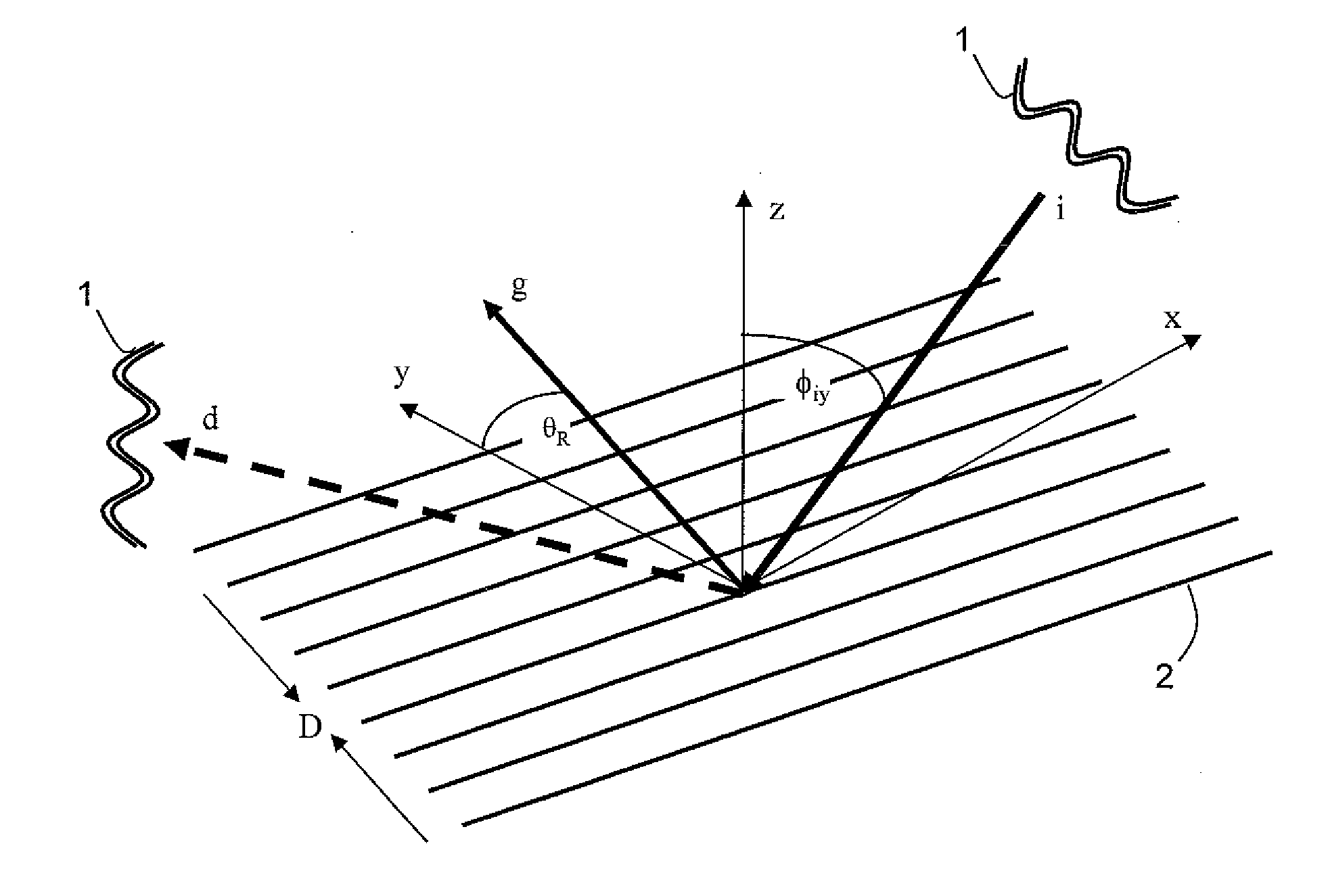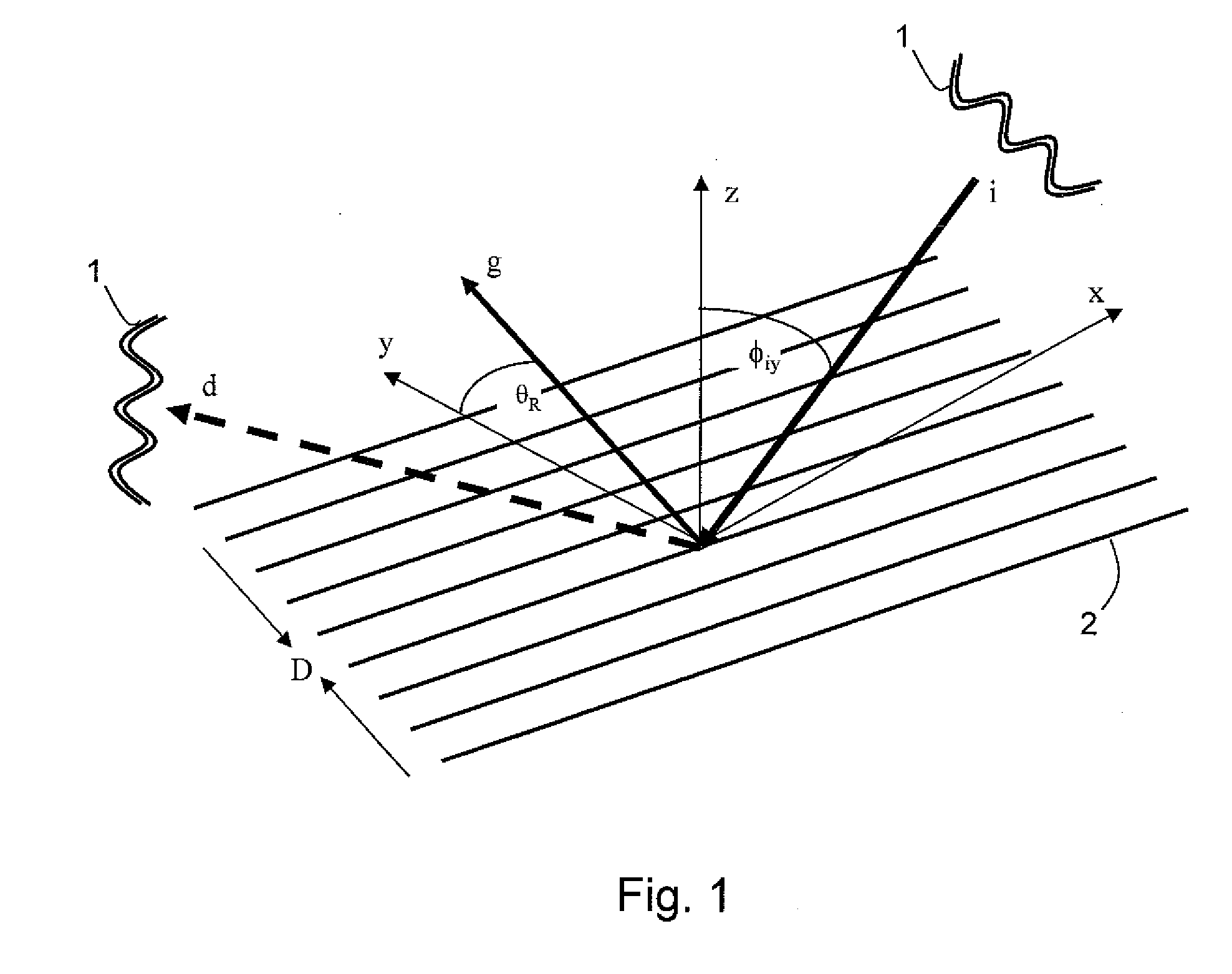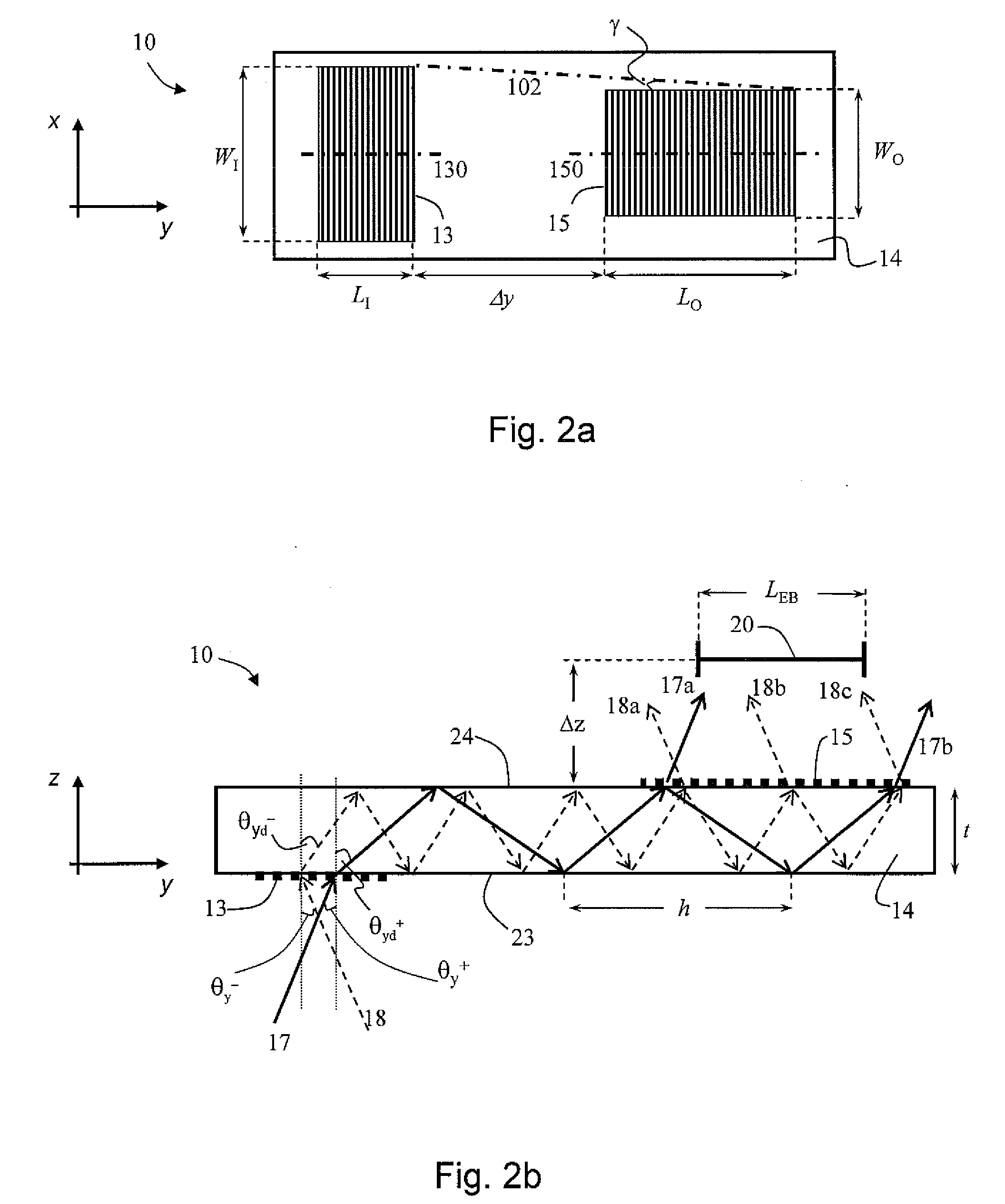Diffractive optical relay device with improved color uniformity
a technology of diffractive optical relay and color uniformity, applied in the field of optical relay, can solve the problems of low chromatic sensitivity at 2 nm spectral range becoming unacceptable sensitivity, uniform optical output across the grating, and radiation into the air being uniform across the grating, so as to improve the performance of devices and systems, and reduce color aberration over a part of the beam's cross section.
- Summary
- Abstract
- Description
- Claims
- Application Information
AI Technical Summary
Benefits of technology
Problems solved by technology
Method used
Image
Examples
examples
[0285]Reference is now made to the following examples, which together with the above descriptions, illustrate the invention in a non limiting fashion.
[0286]In accordance with some embodiments of the present invention, three types of optical apparatus, referred to as types I, II and III, were designed. Each apparatus was designed to include two optical relay devices, each having a light-transmissive substrate formed with one input diffraction grating and two output diffraction grating, as illustrated in FIG. 12.
[0287]In each apparatus, the first relay device 322a (lower device in FIG. 12) was designated to relay blue and near blue light, and the second relay device 322b (upper device in FIG. 12) was designated to relay red and near red light. All gratings had binary profiles, with ridges which are leveled with the surfaces of the substrates.
[0288]In all three types of apparatus, the thickness of each substrate was 2.3 mm and the index of refraction of each substrate was 1.51. The dis...
PUM
 Login to View More
Login to View More Abstract
Description
Claims
Application Information
 Login to View More
Login to View More - R&D
- Intellectual Property
- Life Sciences
- Materials
- Tech Scout
- Unparalleled Data Quality
- Higher Quality Content
- 60% Fewer Hallucinations
Browse by: Latest US Patents, China's latest patents, Technical Efficacy Thesaurus, Application Domain, Technology Topic, Popular Technical Reports.
© 2025 PatSnap. All rights reserved.Legal|Privacy policy|Modern Slavery Act Transparency Statement|Sitemap|About US| Contact US: help@patsnap.com



